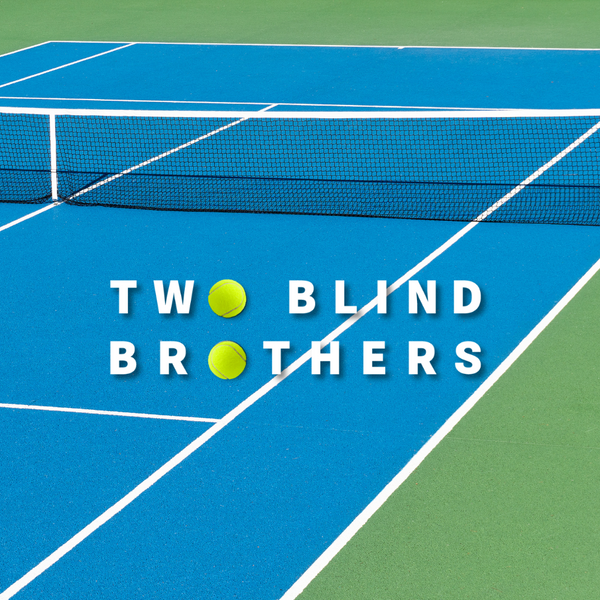When the US Open takes over New York City, tennis becomes more than a sport — it’s a celebration of community, innovation, and possibility. And this year, we’re shining a spotlight on an incredible game that embodies all three: Blind Tennis, also known as sound tennis or vision-impaired tennis. This adaptive sport gives people who are blind or visually impaired the chance to pick up a racket, rally with friends, and experience the pure joy of competition.
Where It All Began
Blind Tennis was born in Japan in 1984, thanks to a 16-year-old high school student named Takeshi Matsui, who was blind himself. He created:
-
A beeping ball made from table tennis balls and a noisemaker
-
A smaller court with tactile lines
-
A lower net and adapted rules depending on vision level
From that simple start, a movement began.
From Japan to the World
By the 1990s, Blind Tennis had spread throughout Japan. In the 2000s, it expanded to other continents, and by the 2010s, the International Blind Tennis Association (IBTA) was formed to standardize rules and grow the sport globally.
-
2017: First international tournament held in Spain
-
2018: First World Blind Tennis Championships with 14+ countries represented
-
2021: Officially recognized by the International Blind Sports Federation
-
Today: Played in over 30 countries, with momentum building toward Paralympic recognition
How Blind Tennis Works
The magic of Blind Tennis comes down to a few key adaptations:
-
The Ball: A foam sponge ball fitted with ball bearings or bells that rattle when it bounces
-
The Court: A smaller playing area with a lowered net and tactile lines
-
The Rules:
-
B1 players (totally blind): Allowed up to 3 bounces
-
B2–B3 players (partially sighted): Fewer bounces depending on vision
-
-
The Experience: Athletes rely on sound, feel, and spatial memory to play — creating a game that’s just as fast, thrilling, and competitive as traditional tennis
🎾 Last Year at the US Open: A Real ‘Come & Try’ Moment
At the 2024 US Open, tennis took a bold step toward inclusion by offering fans a hands-on way to experience Blind and Visually Impaired (BVI) Tennis.
During Fan Week, the “Come and Try BVI” event invited attendees to step onto a smaller court, pick up a racket, and play with a beeping tennis ball and other adaptive equipment. For many, it was the first time they had ever seen (or heard) the sport in action — and it brought Blind Tennis’s innovations to life for fans of all abilities.
The initiative was widely covered, highlighting how the US Open is championing accessibility:
-
Official US Open article — announcing the event and explaining how fans could participate
This wasn’t just an exhibition — it was an invitation to imagine a more inclusive future for tennis, where everyone, regardless of vision, can play and compete.
More Than a Sport
Blind Tennis is about far more than points and rallies. It:
-
Builds confidence, fitness, and independence
-
Fosters community and belonging
-
Proves what’s possible when innovation meets inclusion
World Champion Naqi Rizvi has described playing tennis as “absolute freedom”—a space where he doesn’t need a cane or a guide, just the ball, the court, and the game he loves. Rizvi is also a leading voice pushing for Blind Tennis's inclusion in the Paralympics, ensuring future athletes have the stage they deserve.
Community in Action
Blind Tennis is powered by a passionate and growing community.
-
Creators like @blindandblonde_ shine a light on everyday wins on and off the court
-
Inclusive coaches such as @grenzenlos.tennis bring together blind, visually impaired, and wheelchair players
-
Athletes across the world are posting reels, sharing their training, and inspiring us all with their resilience
These stories remind us that Blind Tennis is more than an adaptive sport—it’s a celebration of human spirit.
🎾 US Open Energy, Two Blind Brothers Style
As the US Open begins, we celebrate Blind Tennis as a symbol of inclusion and innovation in athletics—and a perfect embodiment of the spirit that drives Two Blind Brothers: apparel with purpose, community at its core, and 100% of profits going toward blindness research.
And we’re not stopping there — next week we will be sharing product spotlights featuring our socks, apparel, and accessories. From performance-ready gear to everyday favorites, each piece is designed with comfort, style, and impact in mind.
✨ Join the Movement
Whether you’re watching the US Open, trying out Blind Tennis for yourself, or sharing a reel from your favorite player — you’re part of this story.
👉 Have a Blind Tennis story or video? Tag us with #TwoBlindBrothersTennis — we’d love to feature your voice in our community highlights.
Because in the end, Blind Tennis isn’t just about adapting the game.
It’s about adapting the world so everyone has a chance to play.

